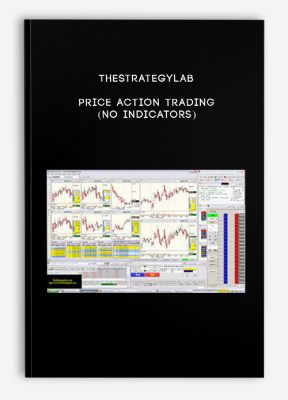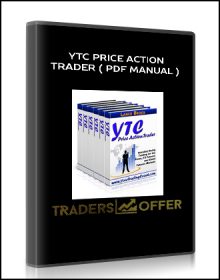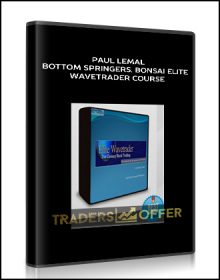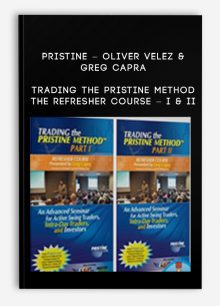Thestrategylab – Price Action Trading (no indicators)
$710.00 $39.00

Thestrategylab – Price Action Trading (no indicators)
Get Thestrategylab – Price Action Trading (no indicators) on Salaedu.com
Description:
Archive Chat Log @ http://www.thestrategylab.com/110206FuturesTrades.htm
Verification of Price Action Trade Performance @ http://www.thestrategylab.com/tsl/forum/viewforum.php?f=383
Image on the left represents what many users in the private chat room were able to see via screen sharing as a price action only trader that did not use indicators…
I took a quick screenshot for marketing purposes, for my own private trade journal documentation (other two monitors not shown) and for verification that I traded on that specific trading day I posted real-time trades in the chat room for those that were not in the chat room or not allowed in the screen sharing for whatever reason with others that were allowed.
I have many images like this of different trading days distributed on different webpages here at my website and at my forum via screen sharing just in case someone says they didn’t see any verification about price action trading without indicators.
Simple definition: Price action trading is a trader that does not use technical indicators or technical studies for trade decisions based upon price action analysis.
The above is a simple definition of price action only trading (no technical indicators). Unfortunately, there’s a growing number of traders the past few years that use one technical indicator with a commonly known price action method and then believe in error that it’s price action trading under the facade they’re using the indicator only as a “visual aid or to help put the price action within a framework” or “using the indicator for trend / range analysis”. In fact, it doesn’t matter what type of technical indicator it is (e.g. cci, stoc, macd, moving average et cetera) nor why you’re using the indicator…if it’s on your chart to help you make trade decisions…you can not call yourself a price action trader until you’ve completely remove all technical indicators or technical studies from your trading.
In addition, arguably, some pure price action traders consider the use of volume as an indicator while others do not. Regardless, I’m not going to play the technical indicator or volume bashing game because they are distractions that serious price action only traders should not be involved with.
Therefore, just be careful of those traders, authors, vendors that say they are price action traders, price action traders of chart patterns, price action system traders while they show a technical indicator on their charts (e.g. cci, stoc, macd, moving average et cetera) because learning such a method will continue making you dependent upon technical indicators via the belief you can improve the price action method by making changes to the indicator whenever you fail to reach your performance goals.
There are primarily three basic groups of traders that are price action trading.
Traders that use charts…sometimes this is refer to as chart reading of price patterns or chart analysis of key price areas without indicators. rThese price action traders use supply & demand analysis, support & resistance analysis, volatility analysis, chart patterns and many other types of chart readings…sometimes discretionary, automation or a little of both.
Traders that use time & sales/bid & ask screens…sometimes this is refer to as tape reading or DOM trading (e.g. scalpers) involving order flow without charts
Traders that use both of the above as in charts and time & sales/bid & ask screens without indicators
Further, for each of the above types of traders…there are hundreds of different types of price action trade methods. In addition, if you’re using charts as a price action trader…you’re using technical analysis even though you’re not using technical indicators. In contrast, price action traders that are tape readers do not consider themselves to be using technical analysis.
Also, there are other definitions of price action trading at the below links:
Investopedia @ https://www.investopedia.com/terms/p/price-action.asp
Wikipedia @ https://en.wikipedia.org/wiki/Price_action_trading
Unfortunately, the above links only provide a definition of price action trading but there’s no actual application info for price action traders. That’s really why you’re reading TheStrategyLab…you want to learn how to apply price action trading in today’s market condition and it begins via a real-tine chat room, discussion forum and all of the info via verifiable trade performance.
http://www.thestrategylab.com/images/emini-futures-chat-room.png
Archive chat log @ http://www.thestrategylab.com/022608FuturesTrades.htm
TheStrategyLab has a chat room called ##TheStrategyLab for price action traders wanting to learn more about WRB Analysis in real-time. This is not a signal calling trade alert room with a guru to tell price action traders what to trade, when to buy and when to sell. Instead, the chat room is for you to ask questions about WRB Analysis involving the price action you see on your monitors. Yet, do not join our chat room to look for someone to tell you what to trade, when to buy and when to sell…that will be a violation of our terms of use policy.
In fact, we have proven that a trader can not successfully copy / mimic / replicate trades posted in real time by another member of TheStrategyLab nor with any other vendor.
If you believe there are signal calling trade alert rooms out there that you can profitably copy / mimic regardless if they use price action trading or trading via technical indicators…please join our free discussion forum and post your screenshots of timestamp trade fills (real money only) in your broker trade execution platform to verify your trade performance along with a copy of the trade log with the trade alerts sent to you by the vendor. Also, name the vendor. So far, no trader has proved we’re wrong beyond one month of trading.
(click on image to view timestamp trade fills in broker trade execution platform)
http://www.thestrategylab.com/tsl/forum/download/file.php?id=5811
In fact, I’ve posted a screenshot (to the left) of exactly what I’m trying to explain to you that you can not highly replicate trades posted in real time by another trader. You can see the timestamp of trade fills in my broker trade execution platform and now compare those times to the trades posted in the chat room after confirmation in my broker trade execution platform. Now imagine you were using our chat room and then seeing those trades posted in real time and then you needing to make a cognitive decision…you’ll always be late in your entry & exits.
With that said, the methods of TheStrategyLab.com are price action trading (no indicators nor studies) via what we refer to as WRB Analysis involving a study of key changes in supply & demand. These key changes in supply & demand is also known as volatility analysis. Regardless to the name…in its simple form…its still chart analysis or a study of price action movement in which we recognize chart patterns and then react (no prediction) to the price action movement. Yet, there’s no DOM analysis in price action trade methods by TheStrategyLab because we know its too difficult to compete with the heavy presence of HFT and algorithms in DOM / order flow / price ladders or whatever its called these days.
Also, there’s no volume analysis within our price action trade methods because our price action clients can easily see the volume in the price action itself after learning WRB Analysis…it identifies and exploits the following to produce key price areas to look for price strong continuation/swing point price action signals:
Key changes in supply/demand (supply demand analysis)
Key changes in volatility (volatility analysis)
Intermarket / Intramarket / Correlation Analysis
The key aspect of WRB Analysis is not to predict. Instead, WRB Analysis helps you to identify key price areas that your trade signal strategies will most likely have a higher probability of success to reach their profit target and / or minimize your losses. Therefore, WRB Analysis is not a trade signal…its an analysis and its the foundation of our price action trade signal methods. It provides the critical context prior to the appearance of our trade signals…allowing us to view the price action beyond trade signals. In fact, after identifying the above key price areas…we call these areas WRB Zones that convert into support/resistance zones when the price action enters the zone.
However, we’re not going to use this webpage to teach WRB Analysis. Thus, if you’re curious to learn more about WRB Analysis via studying tutorial chapters 1, 2 and 3…you can download the free study guide at the below link.
http://www.thestrategylab.com/tsl/forum/viewtopic.php?f=5&t=180
WRB Analysis Tutorials
This is a discretionary market analysis via rule-based price action patterns involving 3 basic tutorial chapters and 9 advance tutorial chapters that provides the understanding of the price action prior to the appearance of any trade strategy (entry signals) you may be using. More importantly, the WRB Analysis gives the context (understanding of the price action) that allows it to be merged with any other trade signal method regardless if you’re using bar charts, candlestick charts, tick charts or volume base charts. In fact, most of our clients use WRB Analysis to improve the performance of other well known methods their using after realizing they were still missing a piece of the puzzle.
WRB Analysis tutorial chapters are applicable for any stocks, futures, exchange traded funds and forex currencies on any time frame that has WRB intervals, WRB Hidden GAP intervals as defined in the WRB Analysis Free Study Guide and the Advance WRB Analysis Tutorial Chapters.
WRB Analysis Basic Tutorial Chapters 1, 2 and 3 are free. More info @ http://www.thestrategylab.com/tsl/forum/viewtopic.php?f=119&t=718
WRB Analysis Advance Tutorial Chapters 4 – 12 are fee-base. More info @ http://www.thestrategylab.com/WRBAnalysisTutorials.htm
Trade Strategies
The FVB trade signal, DCM trade signal, AJCTR trade signal strategies, APAOR trade signal strategies, STR trade signal strategies or VTR trade signal strategies are an objective (rule based) price action trading strategies that identifies imbalances as entry signals, stop/loss management, profit targets and exit signals. The below trading instruments are most commonly traded by clients using our trade signal strategies because these are the trading instruments the TheStrategyLab can provide proper support to help clients. Another way to look at the below list…our trade signal strategies are only applicable to the below list of trading instruments.
CME Emini Futures EMD, ES and NQ
CME Emini RTY Futures (formerly ICE TF)
CBOT mini-sized Dow Futures YM
CME Micro E-mini Futures MES, MNQ, MYM and M2K
Eurex Index Derivatives (futures) DAX and DJ Euro Stoxx50
Eurex Fixed Income Derivatives (futures) BUND, BOBL and Schatz
Euronext Futures FTSE-100 and CAC-40
CME Futures EuroFX 6E and ECTreasury Futures T-Notes ZT, ZN, ZF and T-Bonds ZB
Forex Currencies GbpUsd, EurUsd, EurYen and UsdCad
Exchange Traded Funds BGU, FAS, FAZ, TNA, DIA, IWM, QQQ, SPY, OIH, XLE, GLD and VXX
NYMEX Energy Futures Light Crude Oil CL, Brent Crude BRN, e-miNY QM and Natural Gas NG
COMEX Metal Futures Gold GC, mini-Gold YG, Copper HG and Silver SI
S&P CNX NIFTY Futures
Hang Seng Index Futures HSI and mini-Hang Seng MHI Futures
In fact, our trade signal strategies do in fact involve intermarket analysis, intramarket analysis and correlation analysis for traders trading futures. These two particular analysis are the next level of education/application after the client has mastered the basic education resources of TheStrategyLab. Intermarket analysis and intramarket analysis gives more trade opportunities and helps our clients adapt to other correlated trading instruments if/when they determine its time to change trading instruments via confirmation of their backtesting. Simply, we do not trade via single market approach.
Therefore, if you apply our price action trade signal strategies to any trading instruments not listed above, it will be very difficult for us to provide you with proper support and our refund policy is only applicable for our trade strategies and not for WRB Analysis Tutorials due to the fact that clients that only purchase our WRB Analysis Tutorial Chapters are using it with their own personal trade signal strategies.
Yet, all clients must verify they’ve done their due diligence prior to purchase via posting the required DOKs of the WRB Analysis Free Study Guide. Clients that purchase our fee-base education content without posting the required DOKs are first asked for the info after their purchase and if a client ignores our request for the DOKs…the client is then immediately refunded…no exception.
You can post your DOKs at the free TSL Support Forum @ http://www.thestrategylab.com/tsl/forum/viewforum.php?f=61 or you can request a private thread so that you can upload your DOKs to your private thread if you’re concerned about security & privacy of your information/data. In fact, most users of TheStrategyLab that post their DOKs are doing such in their private threads.
Also, we reserve the right to request other types of verification after a trader purchases any of our fee-base education resources to help us determine if the new client has done proper due diligence prior to purchase and to protect ourselves as a trader/vendor against those that purchase our fee-base education content via false information about their experience with the WRB Analysis Free Study Guide and other free resources of TheStrategyLab.
Forex Trading – Foreign Exchange Course
Want to learn about Forex?
Foreign exchange, or forex, is the conversion of one country’s currency into another.
In a free economy, a country’s currency is valued according to the laws of supply and demand.
In other words, a currency’s value can be pegged to another country’s currency, such as the U.S. dollar, or even to a basket of currencies.
A country’s currency value may also be set by the country’s government.
However, most countries float their currencies freely against those of other countries, which keeps them in constant fluctuation.
More Course: FOREX TRADING
Outstanding Course:Chris Pulver – RightTrader Course
1 review for Thestrategylab – Price Action Trading (no indicators)
Add a review Cancel reply
Related products
Forex - Trading & Investment
Michael Parsons – Channel Surfing Video Course (Manual,Video)
Forex - Trading & Investment
Paul Lemal – Bottom Springers. Bonsai Elite WaveTrader Course (8 DVDs & Manuals)
Forex - Trading & Investment
Mike McMahon – Professional Trader Series DVD Set (Full) (tradingacademy.com)
Forex - Trading & Investment
Pristine – Oliver Velez & Greg Capra – Trading the Pristine Method. The Refresher Course – I & II










king –
We encourage you to check Content Proof carefully before paying.
“Excepted” these contents: “Online coaching, Software, Facebook group, Skype and Email support from Author.”
If you have enough money and feel good. We encourage you to buy this product from the original Author to get full other “Excepted” contents from them.
Thank you!